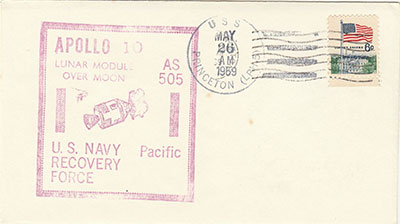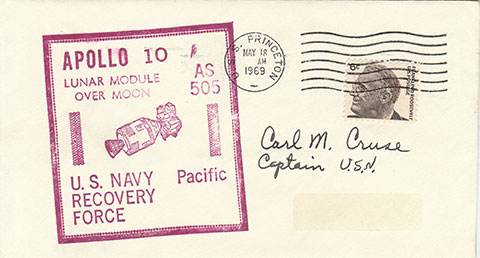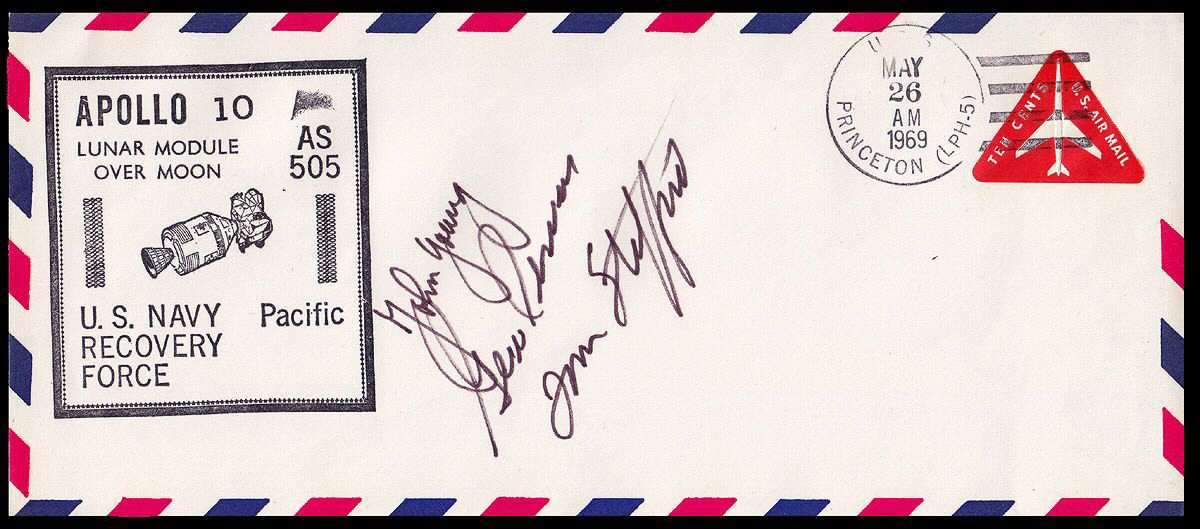Space Cover #488: How do rare cancels come about?Did you ever come across a rather common cover but notice there is a different cancel than you are used to seeing? If so, did you ever try to figure out where the uncommon cancel came from? For this week's Space Cover of the Week, the answer to the mystery is right there if you look close enough.
Apollo 10 was launched May 18, 1969 in a full dress rehearsal for the upcoming attempt to land Apollo 11 on the moon. The mission was a great success and splashed down May 26, 1969. The prime recovery ship was USS Princeton. All went smoothly with the recovery and hundreds of covers were postmarked on board USS Princeton on the recovery date. The great majority of covers received a machine cancel.
The first cover pictured is the common cover that is seen everywhere. This particular cover was also signed by the Commanding Officer. There were however at least a couple of covers that received a very rare hand cancel. The second cover pictured is one of those rare covers.

If you look closely at the cover, there is a partial machine cancel. My guess is that the postal clerk spotted this cover with a partial cancel and proceeded to cancel it again with the hand cancel so that the collector would receive the cover with a complete date and ship's name. A simple gesture that creates a very rare cover.
I previously had a second Apollo 10 recovery cover with a USS Princeton hand cancel. It was a #10 envelope with no hint of a machine cancel. My guess is that it never received a machine cancel or because it was a #10 envelope the postal clerk just cancelled it with a hand cancel.
Does anyone else have any very common covers with a very rare cancel? Did you try to solve the mystery of why the cover received the rare cancel? Let us know!














